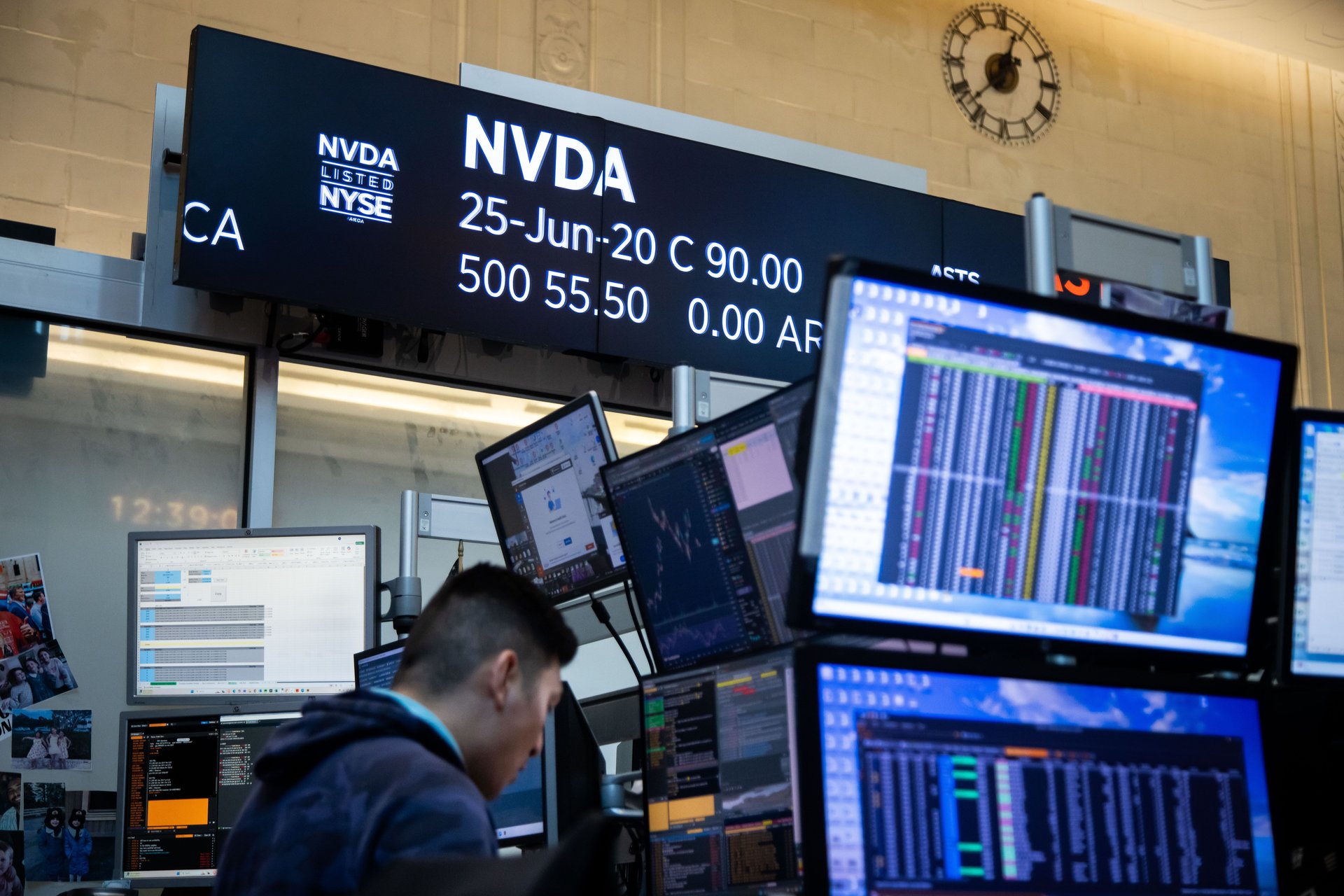A tale of 2 stock markets
Chipmakers and AI infrastructure plays are soaring. But consumer stocks, retail giants, industrials, and pretty much all the other sectors are lagging

Michael Nagle/Bloomberg via Getty Images
Through the first six months of 2025, Wall Street has split into two Americas: the future and, well, everything else.
Chipmakers and AI infrastructure plays are soaring. But consumer stocks, retail giants, industrials, and pretty much all the other companies not powering the artificial intelligence arms race are, to use the not-so-technical term: meh.
The divergence isn’t new, but it’s never been this stark. Nvidia stock is up more than 13% this year. Palantir? Over 83%. Broadcom, Supermicro, Arm, Oracle — all sharply higher.
Meanwhile, Target stock is down almost 30%. Dollar General, Home Depot and UPS are basically treading water (or worse, drowning in it). Cyclicals are surviving but irrelevant in a market chasing exponential growth — especially the kind tied to AI infrastructure.
This is a market rally, yes. But it’s a selective one.
And it’s running on a very particular kind of fuel: hard data, strong earnings — and absolutely no interest in old-school fundamentals.
AI or bust
Nvidia has become both a symbol and the center of the AI bull case. Its stock topped $158 last week, putting the AI chipmaker's market cap just shy of $4 trillion — larger than France’s GDP. Nvidia’s first-quarter earnings report showed data center revenue up 73% year-over-year.
Broadcom is riding the same wave after a breakout quarter. Supermicro, formerly Super Micro Computer, is back-ordered deep into 2026. And all of this is translating into real earnings: Analysts at Loop Capital have set a price target for Nvidia stock that implies a path to $6 trillion by 2027, assuming AI infrastructure spend keeps snowballing.
SMH, the semiconductor ETF, is up more than 13% this year. Some individual chip stocks are up closer to 80%. And while Big Tech has wobbled at times — Apple and Google parent Alphabet are still down on the year — the AI players have soaked up most of the market’s conviction. Breadth is narrow, but the profits are real. Micron is benefiting from rising DRAM prices as demand for high-bandwidth memory chips surges amid Nvidia’s growth. And machine-learning mega-cap stocks continue to generate strong cash flow, not just excitement.
Meanwhile, the rest of the S&P 500 is acting like someone let the air out.
Traditional consumer-facing companies have spent 2025 on the sidelines. The reasons are straightforward: cautious consumers, sticky inflation, and policy headwinds that don’t affect Nvidia’s margins but are absolutely hammering big-box retail.
Consumer spending fell 0.1% in May, and disposable income dropped 0.4%, according to the latest data from the Department of Commerce. The Conference Board’s consumer confidence index has been slipping, too, falling below 93 in June. With inflation still hovering near 2.7%, and tariffs pushing up the price of durable goods, Americans are pulling back. In May, McKinsey reported that 43% of U.S. consumers are actively cutting discretionary spending — and that almost a third are worried about rising import costs.
Target cut its full-year guidance in May, citing both soft demand and higher costs. Home Depot is struggling with foot traffic and stagnant same-store sales. Even UPS, which typically tracks overall economic momentum, has seen parcel volume slow amid lower e-commerce and business demand.
The winners? Discount retailers. Dollar General and Five Below are seeing modest same-store growth and increased foot traffic as consumers trade down — but even that growth is tepid compared to what Wall Street is looking for.
The slowdown in retail and logistics feels structural. Private-label goods are up, discretionary categories are down, and big-ticket home improvements are on pause. Until inflation eases, wage growth rebounds, or tariff threats subside, many of these companies will continue to underperform. Earnings in many of these sectors are fine. But “fine” doesn’t cut it in a market where Nvidia prints $44 billion in quarterly revenue and investors have become allergic to anything that doesn’t involve a GPU.
The machines are winning
Part of the rally’s narrowness is structural. The big funds and quants are chasing growth, and the only real growth is in AI. The Magnificent 7 (Alphabet, Amazon, Apple, Meta, Microsoft, Nvidia, and Tesla) now account for almost half of the S&P 500’s total market cap gains this year. If you take those seven out, the index barely moves.
But the other part of the rally’s growth is psychological.
After years of interest-rate ping-pong and pandemic-era market distortions, investors have become addicted to stories with scale. AI isn’t just a growth story. It’s a movement. A new platform. A promise of exponential return. And it’s hard for Wall Street to get that excited about freight logistics when Nvidia and Microsoft are out there reshaping the cloud.
Of course, narrow rallies are fragile by nature. If AI capital expenditures slow or political risk rears its head again, the high-flyers could come down hard. Some analysts are already flagging that expectations may be running ahead of reality. And there are only so many cloud data centers the world can build in a quarter.
Still, the market keeps choosing speed over caution. The first half of 2025 has made one thing brutally clear: The future is outperforming the present. AI is the narrative. Chips are the trade. And if you’re a retailer, industrial player, or anything that lives in the real world and doesn’t train large language models, investors are happy to leave you behind.
Capital is flowing where the conviction is. And right now, on Wall Street, conviction is spelled N-V-D-A.
